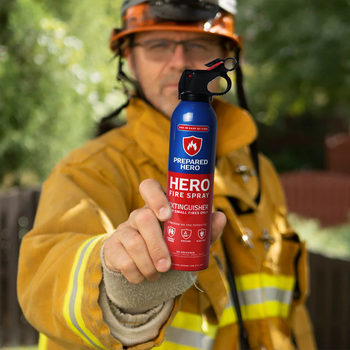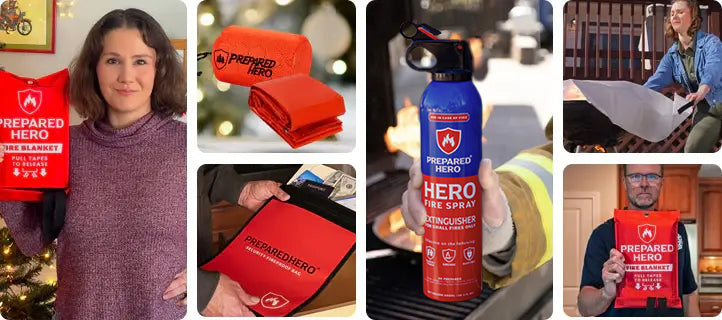Where you put your smoke detectors matters just as much as installing them. Proper placement makes sure they can detect...
Parking near a fire hydrant might seem harmless if you’re only stopping for a few minutes, but there are rules you should follow. Firefighters need quick, clear access to fire hydrants during an emergency, and a short delay can put lives at risk. Aside from safety, parking too close to a fire hydrant can lead to fines or towing.
So, how close can you park to a fire hydrant? In this guide, we’ll talk about how close you can legally park to a fire hydrant, why it’s dangerous to park too close to it, and the sanctions involved.
What Are Fire Hydrants For?

Fire hydrants might not look important, but they play a huge role in keeping communities safe. Their main purpose is to give firefighters quick access to water during an emergency. They’re directly connected to the city’s water supply, so firefighters get a strong flow of water when they connect their hoses to them. Without fire hydrants, it would be much harder and slower to control fires.
Firefighters are trained on how to connect hoses, open the valves, and manage the high water pressure. Time is crucial here, so they have to get everything running within a minute. In short, fire hydrants make firefighting faster, safer, and more effective.
However, hydrants aren’t only for fire. Cities sometimes use them to clean the streets, for construction, or as cooling stations during hot weather. Due to these, they’re kept locked with special tools to prevent misuse.
How Close Can I Legally Park Next to a Fire Hydrant?
You can legally park at least 15 feet from a fire hydrant. In other words, you can’t park within 15 feet of it. This law is followed across most states, including California, Michigan, and Texas. However, some states allow you to park within 10 feet of a fire hydrant. These states include Connecticut, Massachusetts, and Oregon. Lastly, a few states, including Iowa, Vermont, and Rhode Island, allow you to park within five feet, six feet, and eight feet of a fire hydrant, respectively.
The space gives firefighters the clearance they need to hook up hoses quickly and safely during an emergency. However, there’s one exception. If you’re sitting in the driver’s seat, licensed and ready to move the car instantly, you may be allowed to stop briefly. While you’re legally allowed to do this, it’s not a good idea to risk it.
The main reason why you can’t park too close is safety. If a vehicle is too close to a fire hydrant, firefighters lose seconds trying to squeeze in their equipment. Those seconds make a huge difference in saving lives or property. Even if you’re not blocking the hydrant directly, parking too close can make it difficult or slow down their work.
The best move is to keep your car at least 15 feet away from any fire hydrant. It’s safer, avoids tickets, and helps firefighters do their job without delay.
Be Ready Before Help Arrives

Fire hydrants help, but they’re not the only tools that matter. While they give firefighters the water supply they need, you don’t have them at home. This is where smaller fire protection tools come in.
For instance, a fire blanket can quickly smother small grease fires before they spread. Fire sprays work like fire extinguishers but are lighter, easier to use, and leave less mess.
Just like keeping clear of a hydrant helps the fire department, having tools like a fire blanket or fire spray nearby helps you respond fast when seconds count. Fires spread quickly, and waiting for help isn’t always an option.
In short, fire hydrants, blankets, and sprays are all part of the same goal: stopping fires before they cause serious damage. Keeping hydrants clear and having the right tools makes your home, loved ones, and community safer.
Do you want reliable, easy-to-use, and affordable tools to put out small fires before they spread? Check out Prepared Hero’s fire prevention tools here, and get up to 51% off on certain items.
Why Is It Dangerous to Park Next to a Fire Hydrant?
Parking next to a fire hydrant is dangerous because it blocks quick access, hides the hydrant from view, takes up the space firefighters need to work, and slows down efforts to stop a fire.
Parking next to a fire hydrant isn’t just a ticket risk. It’s actually dangerous. Hydrants are crucial in emergencies because they supply the water firefighters need to put out fires. If a car is blocking one, firefighters lose valuable time trying to work around it. Remember, every second matters during a fire.
Another problem is visibility. If a car is parked too close, the hydrant may be hidden from view. Fire crews need to spot hydrants when they pull up to a scene. Even a minor delay can slow down their response.
Another issue is space. Firefighters need room around the hydrant to connect hoses, open valves, and move their equipment. A vehicle parked near it crowds that area, making it harder for them to work safely.
On a bigger level, parking far enough from hydrants is about public safety. Fires spread fast, and blocked hydrants make it harder to control the flames. This puts lives and property at risk. That’s why the rule against parking near hydrants is enforced everywhere.
So while you might think “I’ll only be here a minute,” that minute could make a huge difference if an emergency happens. Leaving space around fire hydrants helps firefighters do their job faster and keeps everyone safer.
Are There Any Exceptions for Parking Next to a Fire Hydrant?

There are rarely any exceptions for parking next to a fire hydrant. Plus, the exceptions depend on local laws. For example, some areas may allow a car to idle near a hydrant if it doesn’t block emergency access or disrupt traffic. In other cases, municipalities might issue special permits for construction projects or off-road emergencies. However, those exceptions must be approved in advance.
Some local rules also permit brief stops to drop off or pick up passengers. However, this means you should stay in the driver’s seat and immediately move once you’re done. Emergency vehicles or road maintenance trucks may also be exempt since they’re part of essential operations.
The rule is strict for a reason: firefighters need quick, clear access at all times. Even cars with handicapped plates or special permits aren’t usually given a pass.
The safest bet? Always check your city’s regulations and avoid parking near hydrants unless you’re sure it’s allowed.
Can Parking Next to a Fire Hydrant Lead to a Car Accident?
Yes, parking next to a fire hydrant can lead to a car accident. When a car is parked too close to a hydrant, it creates several safety issues for both drivers and emergency crews.
One of the biggest problems is blocked visibility. If your car is sitting near a hydrant at an intersection, it can block the line of sight for other drivers. This makes it harder for them to see oncoming traffic, pedestrians, or cyclists. Reduced visibility like this is a common cause of collisions.
Another risk comes during emergencies. Firefighters need to connect hoses and access hydrants fast. If a car is in the way, it slows them down. So, your car could get damaged during the rush. Plus, firefighters are allowed to break car windows during an emergency.
Traffic is another issue. Cars illegally parked near hydrants can cause bottlenecks in residential areas. This congestion makes it harder for other drivers to maneuver and raises the chances of fender-benders or worse accidents.
In addition, parking too close to a hydrant usually means fines. In some cases, your car could be towed. If an accident happens and your car’s placement played a role, you might be held liable for the damages.
In short, parking near a fire hydrant isn’t worth the risk. You’re not only breaking the law but also creating potential hazards for yourself, other drivers, and emergency responders. Staying at least 15 feet away keeps everyone safer.
How Do I Know if I’m Parked 15 Feet Away From a Fire Hydrant?

Figuring out if you’re parked 15 feet away from a fire hydrant isn’t too tricky once you know what to look for. The simplest way is to use visual cues. For example, many sidewalk tiles are about five feet wide. Count three of them, and you’ve got roughly 15 feet.
You can also think about the size of your car. Most sedans are around 14 to 16 feet long, so parking at least one car length away is a safe bet. If you’re still unsure, leave extra space rather than risk a fine or block firefighters in an emergency.
Some areas may also have curb markings, like painted red zones. This makes things easier, but don’t rely on them always being there. When in doubt, give the fire hydrant more room.
Is a Fire Hydrant Public Property?
Yes, fire hydrants you see on streets and sidewalks are public property. These are owned and maintained by the city to make sure firefighters always have access to water.
According to the NFPA 291, public fire hydrants should be yellow unless another color has already been adopted as a standard for the community. It’s because the color yellow is more visible.
On the other hand, fire hydrants connected to private properties, like an apartment complex or commercial areas, are usually red. Either way, hydrants must always stay clear for emergencies.
Can I Park Next to a Fire Hydrant if I’m Sitting in the Car?

Sitting in your car doesn’t mean you can park next to a fire hydrant. In most states, the rule is to park at least 15 feet away from a hydrant, no matter what. It’s because firefighters need quick, unobstructed access in an emergency. Even if you’re behind the wheel and ready to move, you could still slow them down when every second matters.
That said, some areas may allow a brief stop if a licensed driver is in the front seat and can move immediately if needed. This is often allowed during the day, but exceptions depend on local laws. Always check posted signs and local parking laws to be sure.
The bottom line is, it’s safer to avoid parking near hydrants altogether. You’ll save yourself from fines and, more importantly, keep hydrants accessible when firefighters need them.
Does a Fire Hydrant Ticket Go On My Driving Record?
No, a fire hydrant ticket doesn’t go on your driving record. In general, parking tickets are not moving violations, so they won’t affect your license or raise your insurance rates. That said, leaving the ticket unpaid can cause bigger problems.
Unpaid fines may lead to extra fees and your car getting booted or towed. So while you don’t need to worry about your record, you should still pay or contest the ticket right away. Keeping up with it saves you from unnecessary stress and costs down the line.
Conclusion
Parking near a fire hydrant isn’t a minor mistake. It can cause real problems. The 15-foot rule exists to keep firefighters ready to act fast when it matters most. Getting too close can slow them down, block visibility, or lead to accidents. On top of that, you risk getting fined or having your car towed. The safest choice is simple: give hydrants plenty of space. It keeps you out of trouble and helps protect your community. Stay safe, hero!


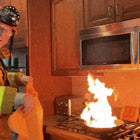 Fire
Fire Safety
Safety Survival
Survival Protection
Protection New
New Scouting America
Scouting America
 Fire
Fire Safety
Safety Survival
Survival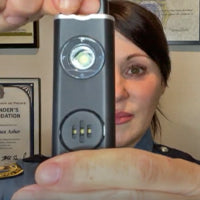 Protection
Protection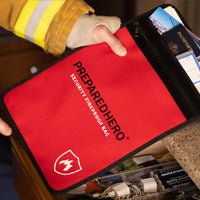 New
New



